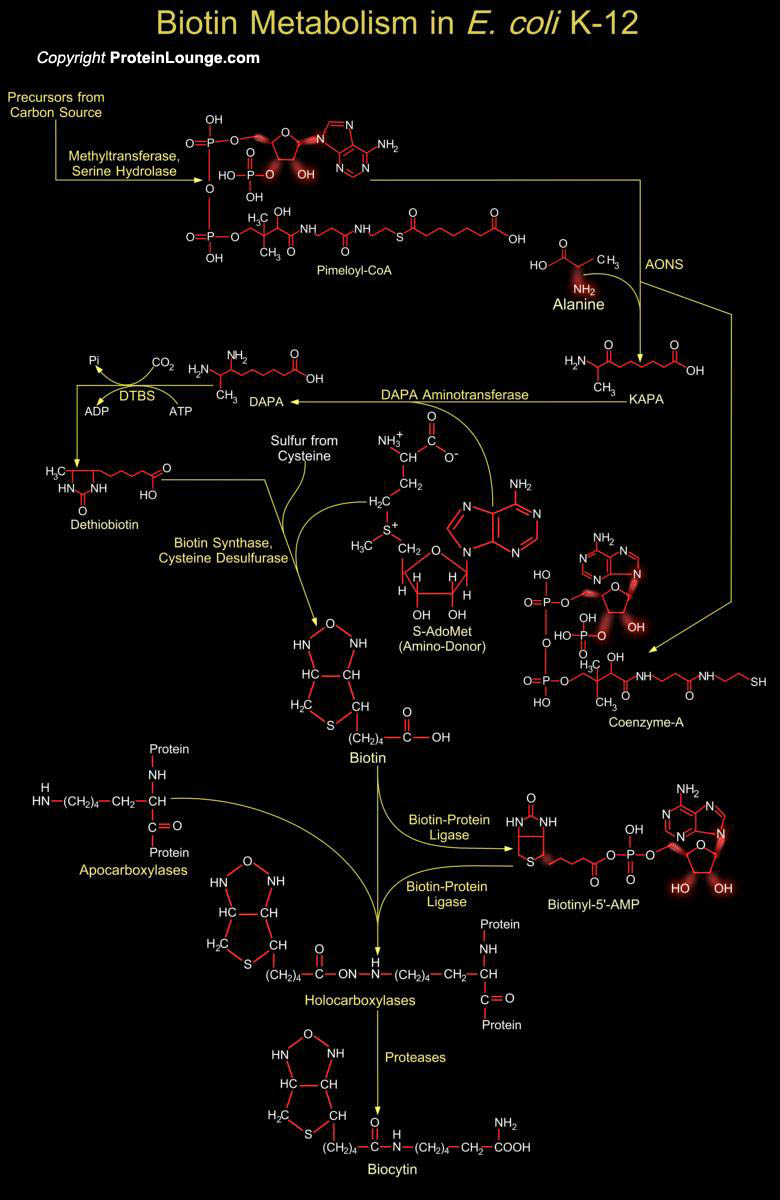
One of the most fascinating cofactors involved in central pathways of pro- and eukaryotic cell metabolism belongs to the B-Complex group of Vitamins known as Biotin or Vitamin-H. Biotin is a colorless and orthorhombic, consisting of two fused rings: an Imidazol (Ureido) and a Sulfur-containing (Tetrahydrothiophene) ring; and the latter is extended via a Valeric acid side chain, which is attached in a cis-configuration with respect to the Ureido ring. Both rings are fused in cis. Biotin contains three chiral carbon atoms, resulting in eight possible Stereoisomers. However, only the Biotin possesses Vitamin activity. The correct chemical name for the cofactor is: Hexahydro-2-Oxo-1H-Thieno (3,4-D) Imidazole-4-Pentanoic Acid. It is noteworthy that this Vitamin withstands[..]
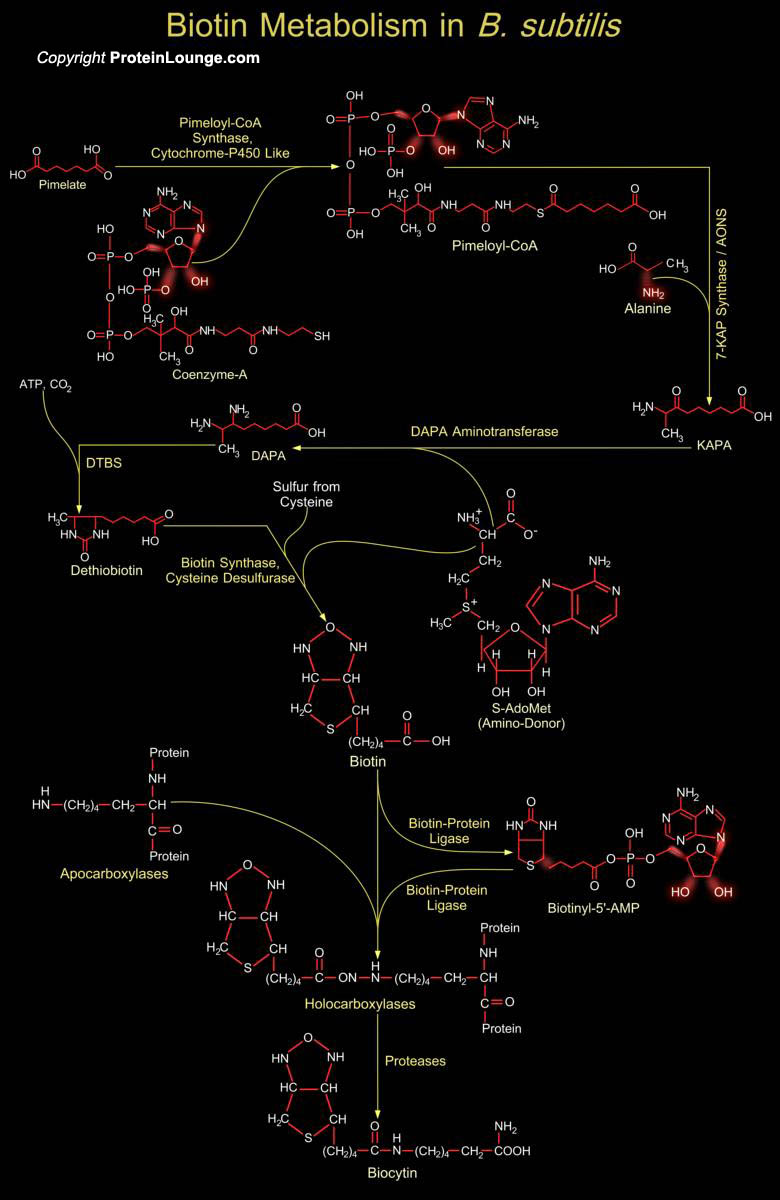
The colorless and orthorhombic Vitamin, Biotin or Vitamin-H, is essential for all living organisms and acts as a cofactor for a few essential enzymes of the Carboxylase family. Bacteria, most fungi and higher plants, are prototrophic for Biotin. Most vertebrates and even some bacteria, rely on exogenous sources. In mammals, Biotin is supplied by intestinal bacteria. In general, Biotin consists of two fused rings: an Imidazol (Ureido) and a Sulfur-containing (Tetrahydrothiophene) ring; and the latter being extended via a Valeric acid side chain, which is attached in a cis-configuration with respect to the Ureido ring. Both rings are fused in cis. Biotin contains three chiral carbon atoms, resulting in eight possible Stereoisomers (Ref.1). The Biotin only possesses[..]
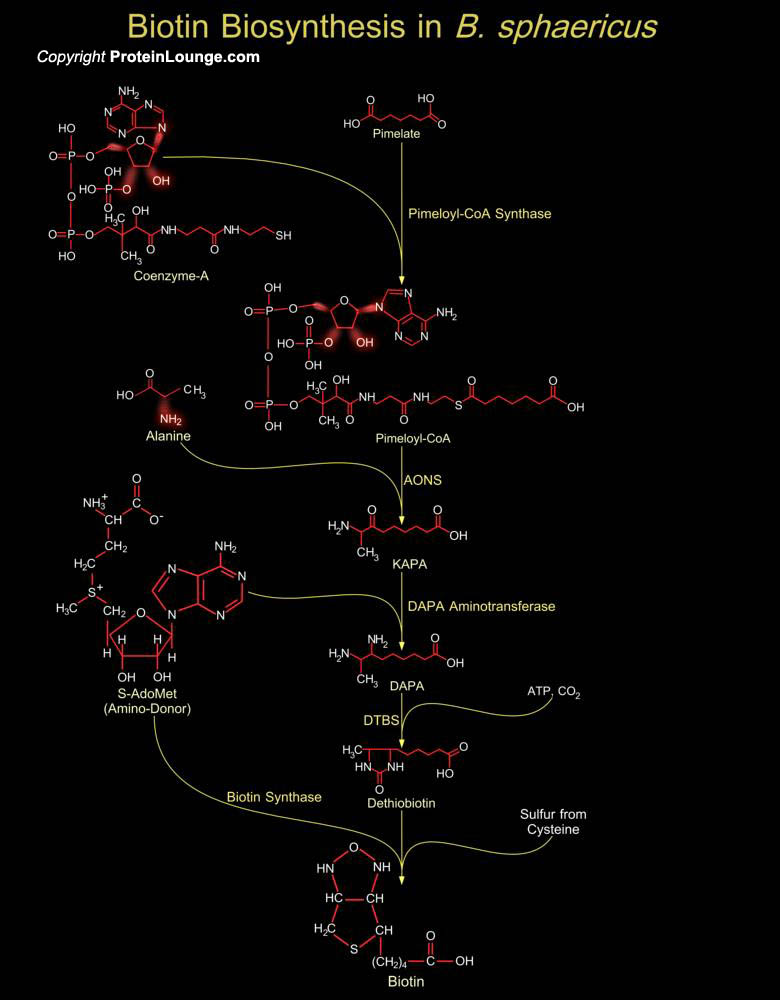
Biotin (Vitamin-H) is essential for all living organisms and acts as a cofactor for a few essential enzymes of the Carboxylase family. Higher plants, most fungi and bacteria, are prototrophic for Biotin. Others, including most vertebrates and some bacteria, rely on exogenous sources. In mammals, Biotin is supplied by intestinal bacteria. Biotin is a colorless Vitamin and Orthorhombic when crystallized. It consists of two fused rings: an Imidazol (Ureido) and a Sulfur-containing (Tetrahydrothiophene) ring; and the latter is extended via a Valeric acid side chain, which is attached in a cis-configuration with respect to the Ureido ring. Both rings are fused in cis. Biotin contains three chiral carbon atoms, resulting in eight possible Stereoisomers (Ref.1). The Biotin[..]
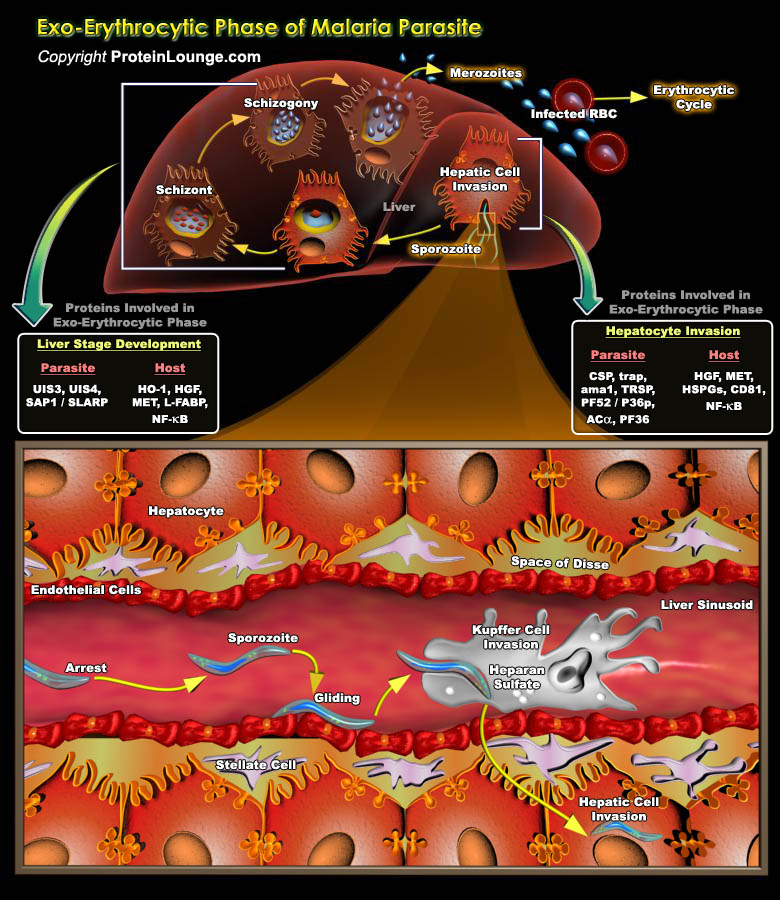
Malaria (from the Italian mal'aria, meaning bad air) is an Acute infection caused by four species of the Protozoa genus Plasmodium: P.falciprium, P.vivax, P.malariae and P.ovale. Plasmodium falciparum is the main cause of disease and death from Malaria. The parasite is transmitted to Humans through the bite of the infected female Anopheles Mosquito. Life cycle of Plasmodium inside Human body can be broadly classified into 2 phases: Pre/ Exo-Erythrocytic phase, and Erythrocytic phase. Exo-Erythrocytic cycle begins when the carrier Female Anopheles mosquito takes a blood meal. Mosquito injects Sporozoites into Human body during the blood meal. Sporozoites travel to the liver to initiate the infection (Ref.1). The entry of Sporozoites to Hepatocytes is mediated[..]
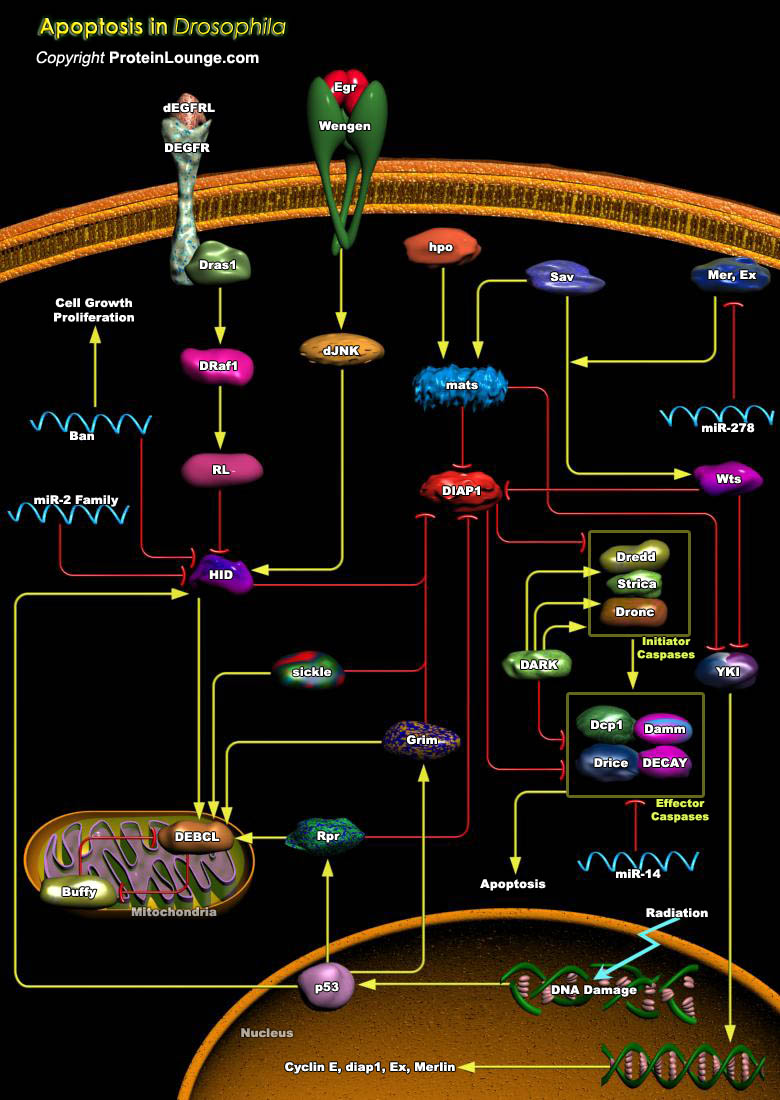
Apoptosis refers to an evolutionarily conserved method of Cell Death that is characterized by specific morphological and biochemical properties. Morphologically, Apoptosis is characterized by a series of structural changes in dying cells: Blebbing of the plasma membrane, Condensation of the cytoplasm and nucleus, and Cellular Fragmentation into membrane Apoptotic bodies. Biochemically, Apoptosis is characterized by the degradation of Chromatin, initially into large fragments of 50-300 kilobases and subsequently into smaller fragments that are monomers and multimers of 200 bases. Programmed Cell Death by Apoptosis is a common way for deleting unwanted and superfluous cells. It is crucial during development as well as in the maintenance of tissue homeostasis and[..]
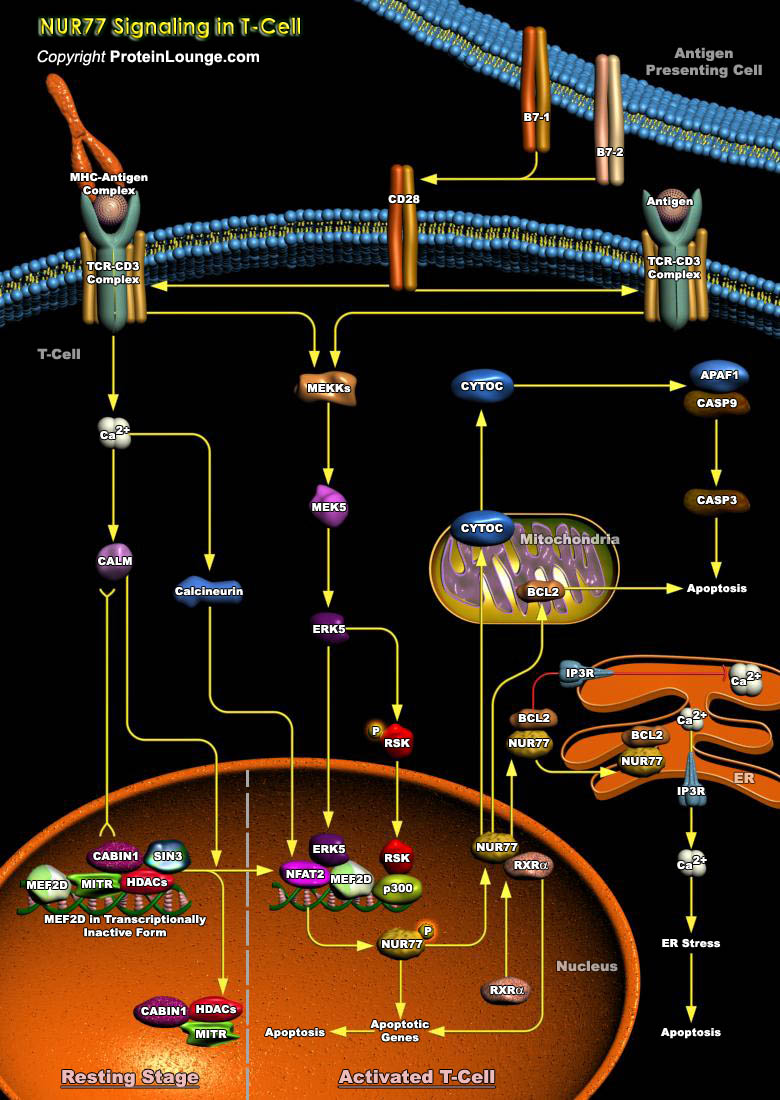
In the immune system, thymus acts as a primary lymphoid organ within which T cells referred to as thymocytes mature. During T cell development in the thymus, immature thymocytes expressing self-reactive TCR (T-Cell Receptor) are eliminated from the developing T-cell repertoire by clonal deletion, or negative selection. This deletion is carried out by Apoptotic signals delivered to thymocytes whose TCR have a high affinity for Self-Antigen/MHC (Major Histocompatibility Complexes)-Antigen Complexes. Negative selection is crucial for generating a peripheral T-lymphocyte population which will recognize only foreign pathogens and helps prevent unwanted immune responses which could lead to autoimmunity (Ref.1). Among the proteins that[..]
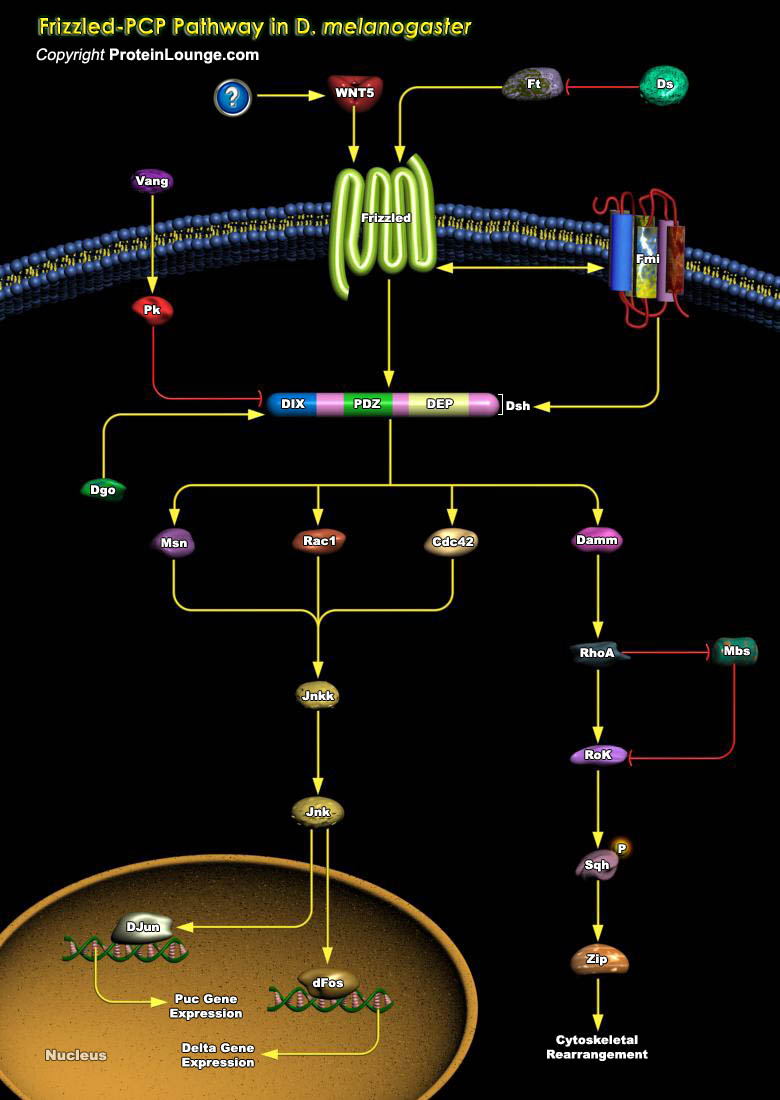
Epithelia are polarized along the apical–basal axis in order to allow for directional transport of proteins within a cell or secretion of factors into. In addition, most epithelia are also polarized within the epithelial plane. The latter polarization is called epithelial PCP (Planar Cell Polarity) or tissue polarity. Planar polarization provides a cell not only with positional information but also directional (vectorial) information and correct PCP is a prerequisite for the formation of many organs. PCP, however, is best studied in Drosophila melanogaster, mainly due to the ease of the fly as a model system. In Drosophila, PCP is externally visible in the alignment of sensory bristles and hairs (trichomes) on the thorax and abdomen, as well as the wing, where[..]
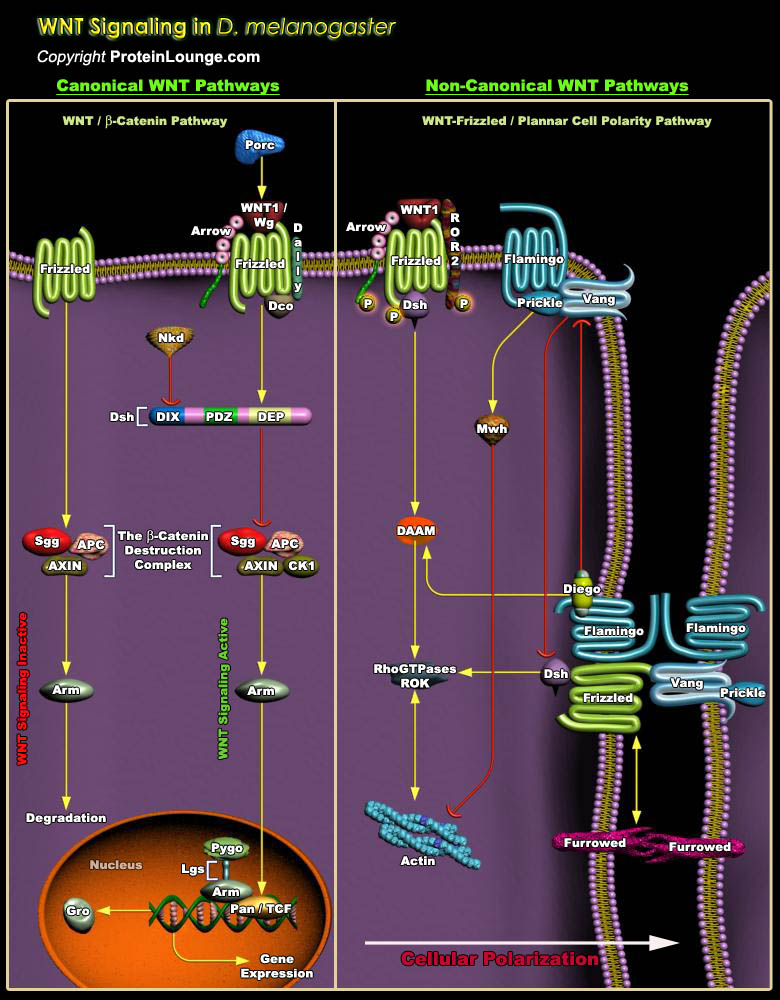
The Wg (wingless) pathway is highly conserved amongst various species and is important for embryonic development, including body axis patterning, cell fate specification, cell proliferation and cell migration. Additionally, Wnt signaling also controls tissue regeneration in adult bone marrow, skin and intestine.Much of our understanding of the role of Wnt proteins during development has come as a result of genetic analyses of the Drosophila Wg gene. In Drosophila, Wg is required during embryogenesis for segmental patterning, muscle development, and midgut formation and to specify appendage primordia. The WNT genes encode a large family of secreted protein growth factors that have been identified in animals from hydra to human. The name WNT denotes the[..]
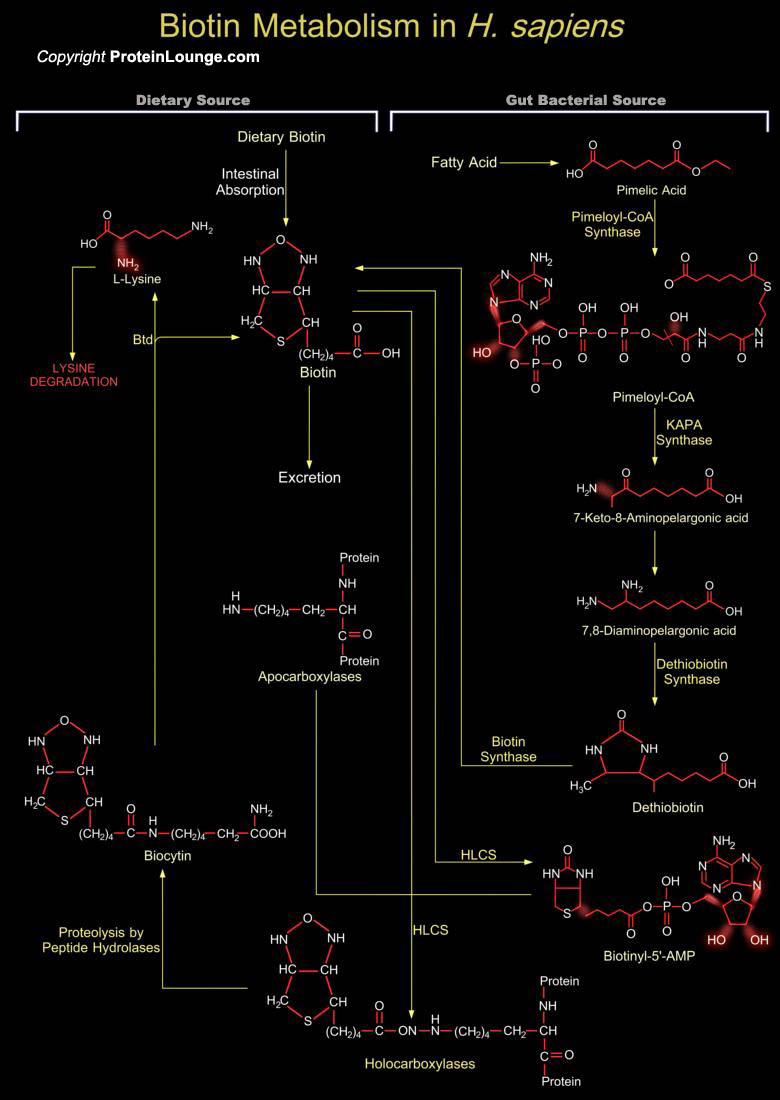
Biotin or Vitamin-H, an essential micronutrient for all mammals belongs to the B-Complex group of Vitamins. It is a water-soluble Vitamin used as co-factor of Biotin-dependent Carboxylases. The role of Biotin in Carboxylases is to act as vector for carboxyl-group transfer between donor and acceptor molecules during Carboxylation reaction (Ref.1). In H. sapiens (Homo sapiens), Biotin is a covalently bound as a prosthetic group for five Biotin-dependent Carboxylases namely PCC (Propionyl-CoA Carboxylase) group; PC (Pyruvate Carboxylase, Mitochondrial); MCC (Methylcrotonyl-Coenzyme-A Carboxylase) group; ACAC-Alpha (Acetyl-Coenzyme-A Carboxylase-Alpha) and ACAC-Beta (Acetyl-Coenzyme-A Carboxylase-Beta). Biotin is covalently attached to Carboxylases by the enzyme HLCS[..]
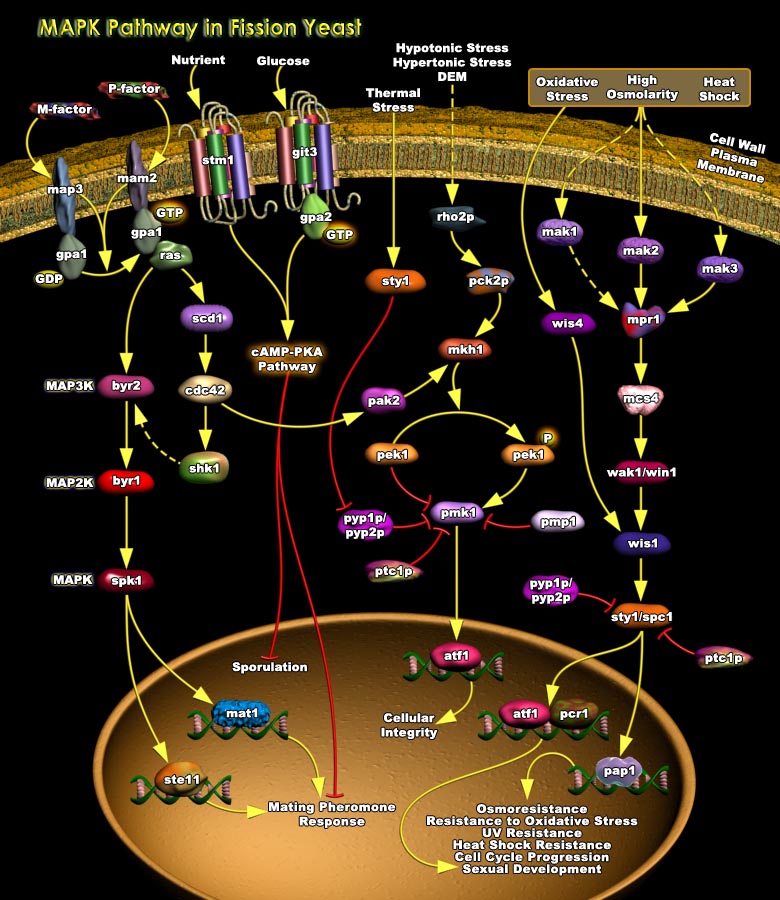
In both Prokaryotes and Eukaryotes, a major adaptive response to various Stress conditions is to change the repertoire of Gene expression. Prokaryotic cells commonly employ the two-component Signal Transduction Systems, where a “sensor” Histidine Kinase, often located in the Plasmamembrane, mediates environmental signals to a cytoplasmic “response regulator” that controls transcription of the target gene. Although Homologous mechanisms have been found also in some Eukaryotic organisms, recent studies have uncovered a pivotal role of MAPK (Mitogen-Activated Protein Kinase) Cascades in stress signaling of Yeast and Vertebrate cells. Each MAPK Cascade comprises a series of three or more protein kinases, each phosphorylating and thereby activating[..]
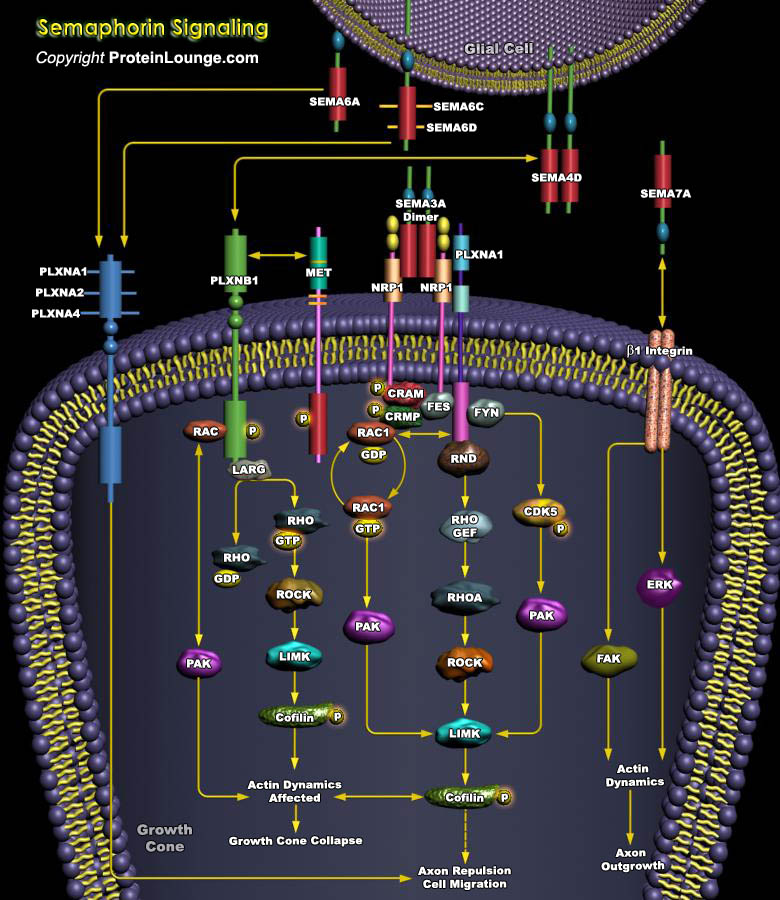
The semaphorins are a family of growth cone guidance molecules, conserved from insects to mammals, which includes proteins strongly implicated in mediating repulsive guidance during neurodevelopment and neuronal regeneration. The range of neurons responsive to semaphorins is extensive and includes dorsal root ganglion, sympathetic, motor, cerebellar, hippocampal, olfactory and corticospinal neurons. Currently, more than 20 members have been identified and they all share a conserved, 500 amino acid residue Sema domain near their amino terminus. Semaphorins are divided into eight classes according to species of origin and structural similarities. The best characterized class of the Semaphorin family is Class 3 Semaphorins. Currently, six members have been identified[..]
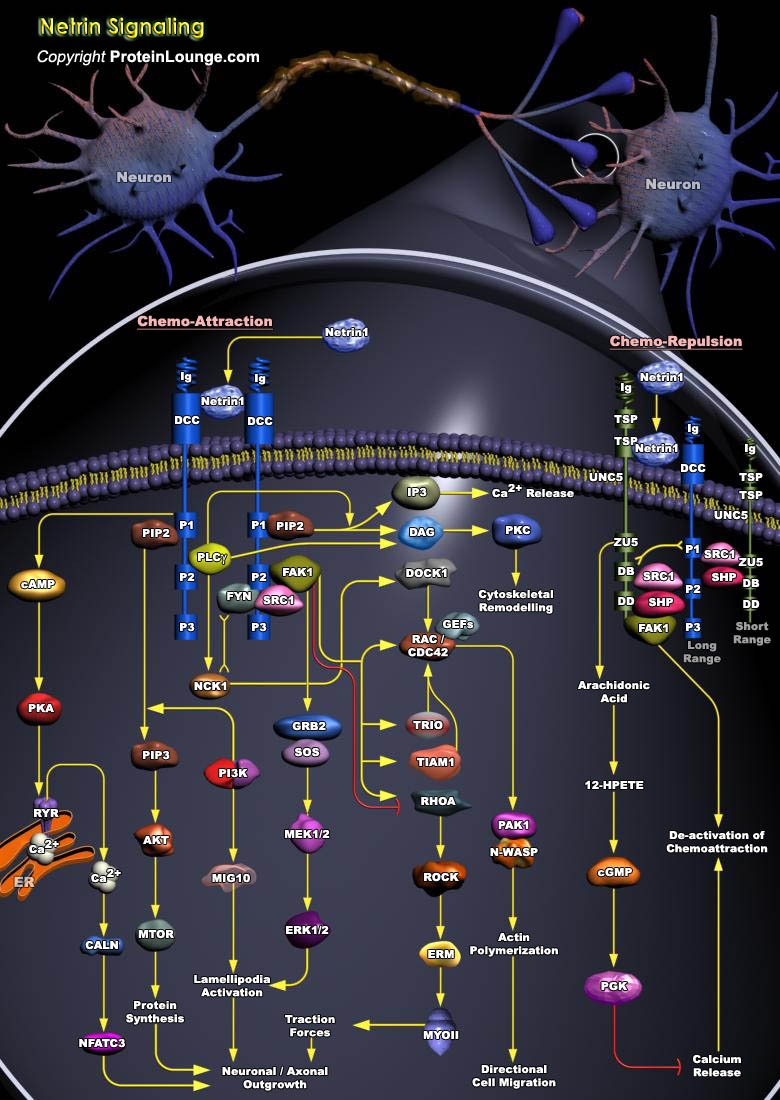
Netrin1 (NTN1) Netrin1 is an evolutionarily conserved signaling protein , which functions as a common cue for axonal guidance and vascular patterning and is responsible for integrating regulatory cues from retinal neurons, glia and immune cells.Netrin1 deficiency may result in shunting of metabolic resources to optimize cell survival in viable retinal cells (Ref.1). Exposure to Netrin1 may lead to chemoattraction or chemoreulsion of an axon. The switching responses between attraction and repulsion are dependent on several factors that include levels of Netrin1 receptor on the surface of the growth cone ;activation or inhibition of signaling pathways by intracellular signals like Ca2+, cGMP, or cAMP;relative affinities of different receptor types for Netrin1 as well[..]

